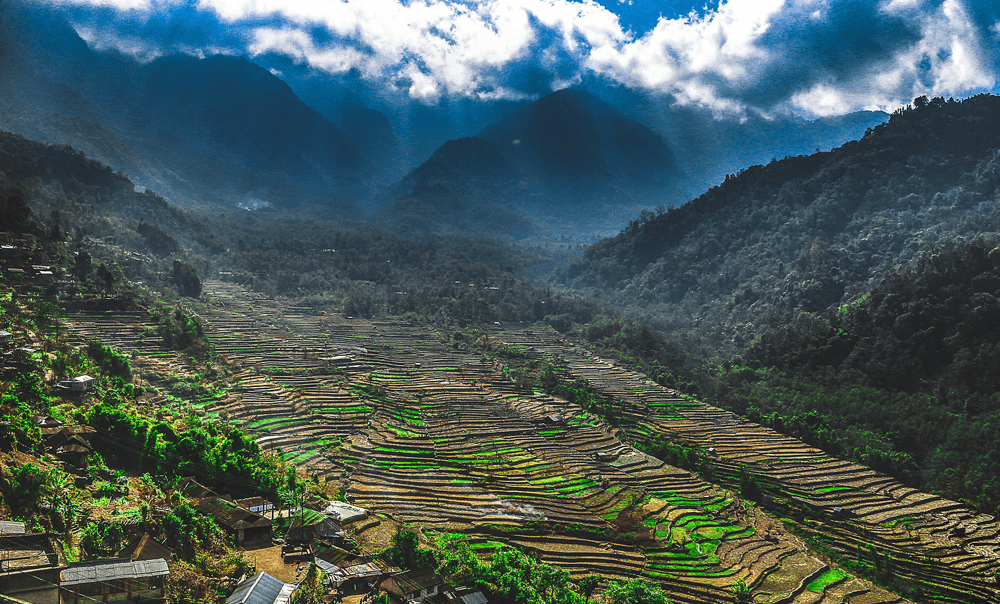

The picturesque village of Khonoma in Nagaland is known for its rich culture, valiant history, and distinctive gastronomy, deeply rooted in the practices of the indigenous Angami tribe. Traditional Naga cuisine revolves around rice, various meats, and locally-grown vegetables, spices, and herbs. As a tribal community, the Angamis of Khonoma have historically relied on sustainable agriculture, foraging, and hunting to obtain their food. However, due to ethical beliefs and legal restrictions, certain meats, particularly cow, are not consumed.
Fermentation and smoking are quintessential processes in the local cuisine, giving the food its unique flavor profile. The use of bamboo shoot, axone (fermented soybean), anishi (fermented yam leaves), and raja mircha (ghost pepper) is particularly prevalent. Over the years, the people of Khonoma have moved towards sustainable practices, including alder-based jhum cultivation that enriches the soil. Khonoma is also known as India's first "Green Village", emphasizing its community's commitment to conservation and sustainable farming.
While Khonoma may not have a wide array of restaurants due to its small village setting, local eateries and family-run kitchens offer visitors a taste of traditional Naga cuisine. Here are a few places where you can experience local food:
Famous for: Traditional Naga Thali (Non-Veg/Veg) - A platter of local dishes, giving guests a variety of authentic flavors.
Famous for: Wild Rice and Seasonal Greens (Veg) - A simple yet flavorful meal showcasing the region's indigenous produce.
Famous for: Bamboo Shoot with Pork (Non-Veg) - A popular local specialty combining the tastes of bamboo with succulent pork.
Note that dining options in Khonoma may not be as commercialized as in more developed tourist destinations, and most of the food places operate with a sense of homeliness and simplicity. It is highly recommended to check the availability and operating hours of these eateries before planning a visit.